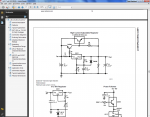Kenom
0
- Joined
- May 4, 2007
- Messages
- 5,628
- Points
- 63
In order to make that work you'd have to have multiple FLAT surfaces on your cone. You can visualize what is happening by shining your laser onto a leadlight chrome case. Do you get a beam reflected or do you get an arc of light that is no longer anywhere close to a beam? You get an arc.
In order to make it work you need flat surfaces and even that isn't going to give you a completely combined beam. (but pretty damn close) Check out this thread over at Photonlexicon where they actually have designed specifically one of the "axicons"
Here
Up a few posts you'll see examples of what the "dot" would look like.
In order to make it work you need flat surfaces and even that isn't going to give you a completely combined beam. (but pretty damn close) Check out this thread over at Photonlexicon where they actually have designed specifically one of the "axicons"
Here
Up a few posts you'll see examples of what the "dot" would look like.






